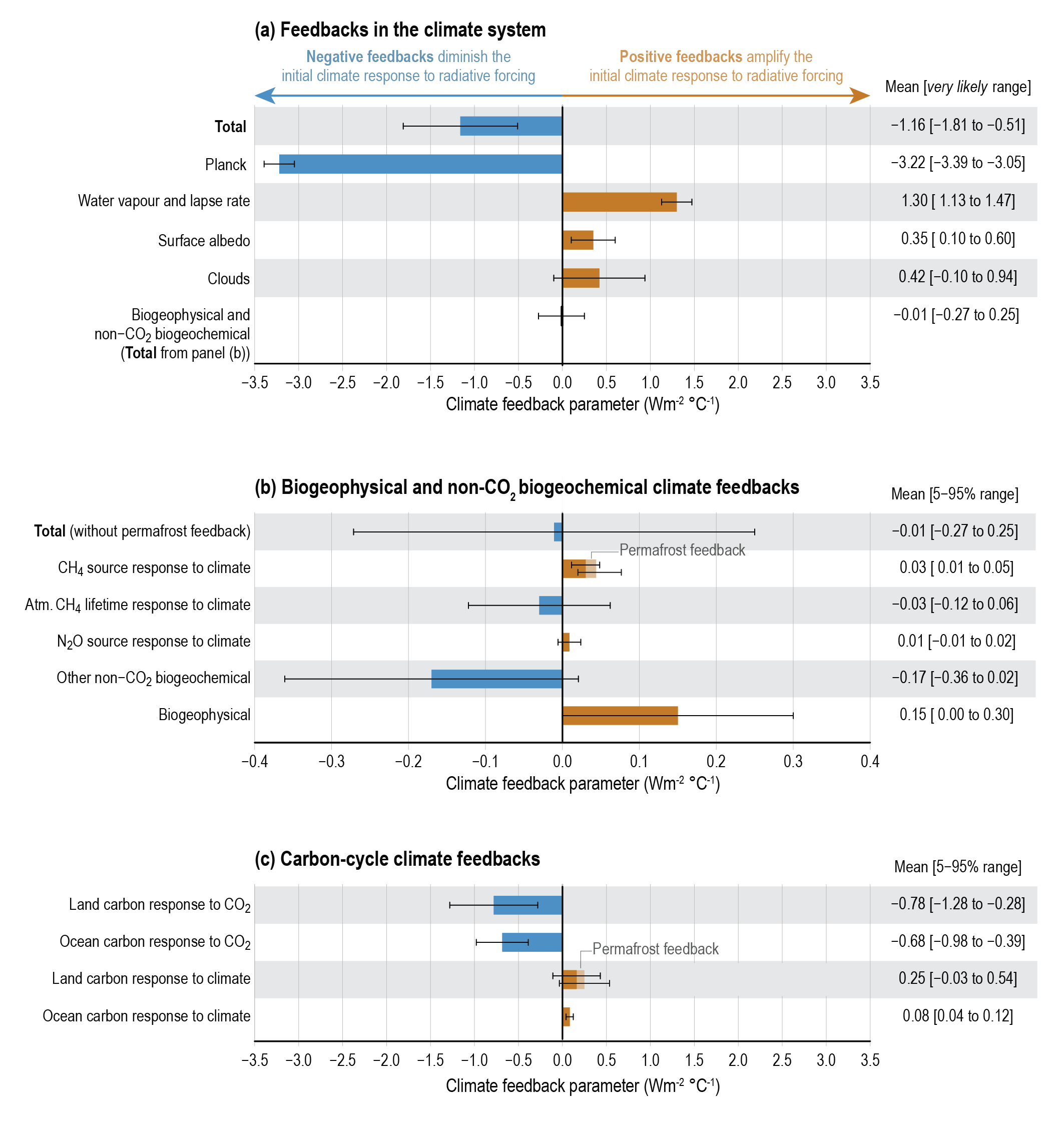Back chapter figures
Figure TS.17
Figure caption
Figure TS.17 | An overview of physical and biogeochemical feedbacks in the climate system. The intent of this figure is to summarize assessed estimates of physical, biogeophysical and biogeochemical feedbacks on global temperature based on Chapters 5, 6 and 7. (a) Synthesis of physical, biogeophysical and non-carbon dioxide (CO2) biogeochemical feedbacks that are included in the definition of equilibrium climate sensitivity (ECS) assessed in this Technical Summary. These feedbacks have been assessed using multiple lines of evidence including observations, models and theory. The net feedback is the sum of the Planck response, water vapour and lapse rate, surface albedo, cloud, and biogeophysical and non-CO2 biogeochemical feedbacks. Bars denote the mean feedback values, and uncertainties representvery likely ranges; (b) Estimated values of individual biogeophysical and non-CO2 biogeochemical feedbacks. The atmospheric methane (CH4) lifetime and other non-CO2 biogeochemical feedbacks have been calculated using global Earth system model simulations from AerChemMIP, while the CH4 and nitrous oxide (N2O) source responses to climate have been assessed for the year 2100 using a range of modelling approaches using simplified radiative forcing equations. The estimates represent the mean and 5–95% range. The level of confidence in these estimates is lowowing to the large model spread. (c) Carbon-cycle feedbacks as simulated by models participating in the C4MIP of the Coupled Model Intercomparison Project Phase 6 (CMIP6). An independent estimate of the additional positive carbon-cycle climate feedbacks from permafrost thaw, which is not considered in most C4MIP models, is added. The estimates represent the mean and 5–95% range. Note that these feedbacks act through modifying the atmospheric concentration of CO2 and thus are not included in the definition of ECS, which assumes a doubling of CO2 , 4 but are included in the definition and assessed range of the transient climate response to cumulative CO2 emissions (TCRE). {5.4.7, 5.4.8, Box 5.1, Figure 5.29, 6.4.5, Table 6.9, 7.4.2, Table 7.10}
